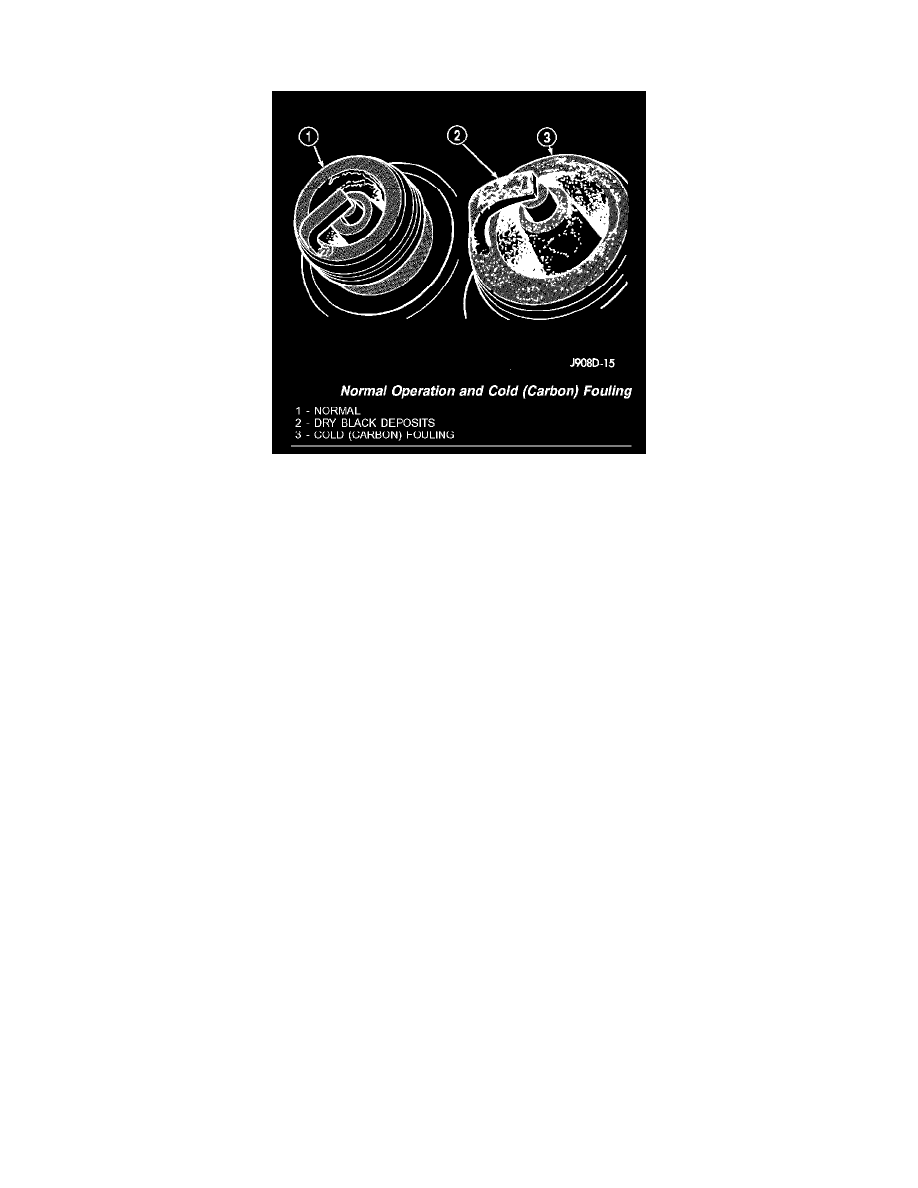Liberty 4WD L4-2.4L DOHC VIN 1 (2005)

Spark Plug: Testing and Inspection
NORMAL OPERATING
Normal Operation And Cold (Carbon) Fouling
The few deposits present on the spark plug will probably be light tan or slightly gray in color. This is evident with most grades of commercial gasoline.
There will not be evidence of electrode burning. Gap growth will not average more than approximately 0.025 mm (0.001 in) per 3200 km (2000 miles)
of operation. Spark plugs that have normal wear can usually be cleaned, have the electrodes filed, have the gap set and then be installed.
Some fuel refiners in several areas of the United States have introduced a manganese additive (MMT) for unleaded fuel. During combustion, fuel with
MMT causes the entire tip of the spark plug to be coated with a rust colored deposit. This rust color can be misdiagnosed as being caused by coolant in
the combustion chamber. Spark plug performance may be affected by MMT deposits.
COLD FOULING/CARBON FOULING
Cold fouling is sometimes referred to as carbon fouling. The deposits that cause cold fouling are basically carbon. A dry, black deposit on one or two
plugs in a set may be caused by sticking valves or defective spark plug cables. Cold (carbon) fouling of the entire set of spark plugs may be caused by a
clogged air cleaner element or repeated short operating times (short trips).
WET FOULING OR GAS FOULING
A spark plug coated with excessive wet fuel or oil is wet fouled. In older engines, worn piston rings, leaking valve guide seals or excessive cylinder wear
can cause wet fouling. In new or recently overhauled engines, wet fouling may occur before break-in (normal oil control) is achieved. This condition can
usually be resolved by cleaning and reinstalling the fouled plugs.
OIL OR ASH ENCRUSTED
